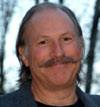According to this theory’s advocates, all that’s left is ironing out the details. But behind the scenes, many physicists worry. They don’t just think string theory (ST) is plain wrong, they fear its existence harms the way science is performed.
Tough words. Let’s look deeper.
At heart, physicists are like metaphysicians who suspect everything is connected fundamentally. After all, electricity, light, and magnetism proved to be facets of the same force of electromagnetism; energy and matter proved to be identical, too.
So why quit there? Surely some underlying principle must unite the weak and strong nuclear forces within atoms, plus the puzzling force of gravity, plus electromagnetism itself. Actually, all have been linked under extraordinary circumstances, except for gravity.
Skeptical physicists and theoreticians include Columbia University’s Peter Woit, who’s an active anti-ST crusader, even though his colleague Brian Greene is arguably the most prominent ST champion. I bet these guys don’t play Cat’s Cradle with each other in the hallway.
Problem one: String theory won’t work in our reality of three dimensions plus the fourth dimension of time. To make it work, its creators had to invent six or seven additional dimensions, which contradicts our own senses and the rest of science. None of these extra dimensions can possibly be tested. They have to be taken on faith.
Problem two: String theory is untestable — no experiment can tell if it’s right or wrong.
Problem three: According to Woit, string theory’s only prediction (about the strength of the cosmological constant) proved to be incorrect by 55 orders of magnitude. Oops. That’s like predicting mice are larger than stars.
Problem four: Those six or seven imaginary dimensions can be tweaked and arranged in so many ways that there is no such entity as “string theory.” Instead, there are an almost infinite number of possible final outcomes available.
Problem five: While ST cocreator Michio Kaku of the City College of New York argues ST is “elegant,” skeptics see just the opposite: a sewer of swirling ad hoc bandages. All this makes Woit quote physicist Wolfgang Pauli: “It’s not even wrong!”
We might wonder why universities and the media would play with strings for so long. Why would grownups invest time with untestable concepts that, after 2 decades, have yet to yield fruit? The partial answer is that these are brilliant people who are having a blast and getting lots of attention. Some of the math has been original and intriguing, although other parts are no more lucid than Bob Dylan lyrics. Play in such imaginary playgrounds for a while, and the fence that separates the real universe from the kind of dreams you get by eating pizza before bedtime gets blurry.
Until recently, science dealt with theories quickly and effectively. They’d be tested. Confirmed ones were kept, wrong ones tossed, flawed ones modified. The process was merciless. But string theorists have managed to concoct dimensions, argue that no testing is possible, and yet somehow enjoy funding year after year.
Peter Woit thinks the main reason is because it’s been the only game in town, the hot-button label, the sure way for graduate students to get grants and publicity. But Woit wonders how much longer the media will “waste its time on a perpetual, well-promoted but never-successful investigation of a theory that has no connection with the physical world.”
Later this year, Woit’s book (among others) will be published, and the whole ball of yarn might begin to unravel publicly. Those in funding positions may finally realize it’s time to move on.
In effect, the message will be: That was great fun, guys. But folks are eager to understand our strange universe, and they’re tired of grasping at threads.










